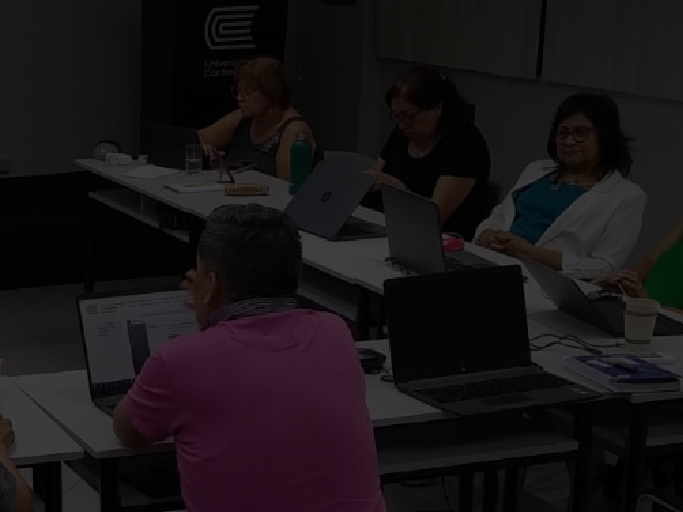Establish a unified electronic portfolio system for Latin America.
Develop a portable profile system to facilitate personalization of learning.
Create guidelines and virtual courses aimed at teaching staff on the creation of customizable routes and content, also providing a monitoring system, to increase the quality level of university teaching.
Promote the flexibility of the university curriculum, facilitating the empowerment of students in the design of careers adapted to their needs and preferences in synergy with the business sector through a learning route recommendation system, which implies greater democratization of education.
Establish a unified credentialing system, managed through blockchain technology, promoting university/company interoperability.
Modernization and streamlining of university management systems, taking into account the urgent need for equity, accessibility and democratization and integrating artificial intelligence tools both to facilitate student access and interaction and to monitor their progress.
Innovation
The project is innovative due to the following:
It incorporates and proposes a portable and unified electronic portfolio system that reflexively relates the progress and achievements achieved in the teaching and learning process.
It develops a system of portable profiles that facilitates the personalization of the experience of learning thanks to interoperability.
It incorporates innovative educational components such as micro credentials, making use of emerging technologies applied in education such as badges and blockchain to create a credentialing system.
Take advantage of program development in non-traditional settings, such as e-learning; virtual education is still perceived with many myths in Latin America, components are proposed to improve and demonstrate the quality of Higher Education.
It promotes the use of new technologies in higher education, through the development of open and flexible educational resources, the acquisition of digital skills and learning methods that include not only the teacher but also the student.
takes advantage of the potential of learning management systems (LMS) to take them to a higher level, overcoming the perception that they are simple systems that host learning materials and resources, and turning them into tools to generate learning paths and access to content and activities that guide the objective of personalization.
Make courses more flexible based on student usage profiles. This proposal does not focus on the development of courses, but rather highlights the need to design e-learning courses based on the needs and preferences of access and interaction of the student and the diagnosis of knowledge and previous knowledge of the students.
The project promotes teaching innovation, supporting the transformation of the teaching role as a guide for an autonomous learner capable of creating innovative and personalized learning routes.
It incorporates the use and/or development of Artificial Intelligence applications, both to facilitate student access and interaction and to monitor progress.
Deliverables
The results are presented based on the methodological structure of the project detailed below:
PT1 PREPARA
States of the art, scenarios and user requirements.
Pilot preparation report.
PT2 INNOVA
Electronic Portfolios, Portable Profile, Learning Route Recommender System, Electronic Credentialing System and Intelligent Management System.
PT3 CUSTOMIZE
Teacher training model in creating learning routes, customizable content and curricular flexibility.
International, flexible and customizable postgraduate course.
PT4 ORGANIZE
Report on good practices and organizational requirements for: the implementation of the unified electronic portfolio, personalization of educational content, curricular flexibility, unified accreditation system and intelligent systems for university management.
PT5 QUALITY
Project quality system and periodic monitoring results reports, pilot execution results, technical evaluation of results and products and results of application of the quality model in the pilots.
PT6 DISSEMINATE
Strategic dissemination and dissemination plan.
Communication reports through traditional media and web 2.0, dissemination for understanding, dissemination for action and scientific dissemination.
PT7 MANAGES
Administrative and scientific management reports.

Methodological Structure of the Project
YachaY work packages
PREPARE
Prepare properly to all members of the consortium in all aspects related to the administrative, financial and scientific management of the project.
INNOVATES
Promotes the creation of apps and devices to meet special educational needs and diversity.
CUSTOMIZE
It develops training actions that contribute to improving educational quality, through content personalization and curricular flexibility.
ORGANIZE
Persuade those responsible for educational institutions through information and scientific evidence, in the implementation of the components developed in the project.
QUALITY
Guarantee the follow-up and evaluation of the quality of the project in its entirety, including activities and results based on the Quality System.
DISSEMINATES
Promotes the diffusion and dissemination of the results and significant activities of the project, with the highest possible quality and through all the channels at our disposal.
MANAGE
Ensure the administrative, financial and scientific management of the project in a timely manner. It is therefore related to each and every one of the packages of the project.


